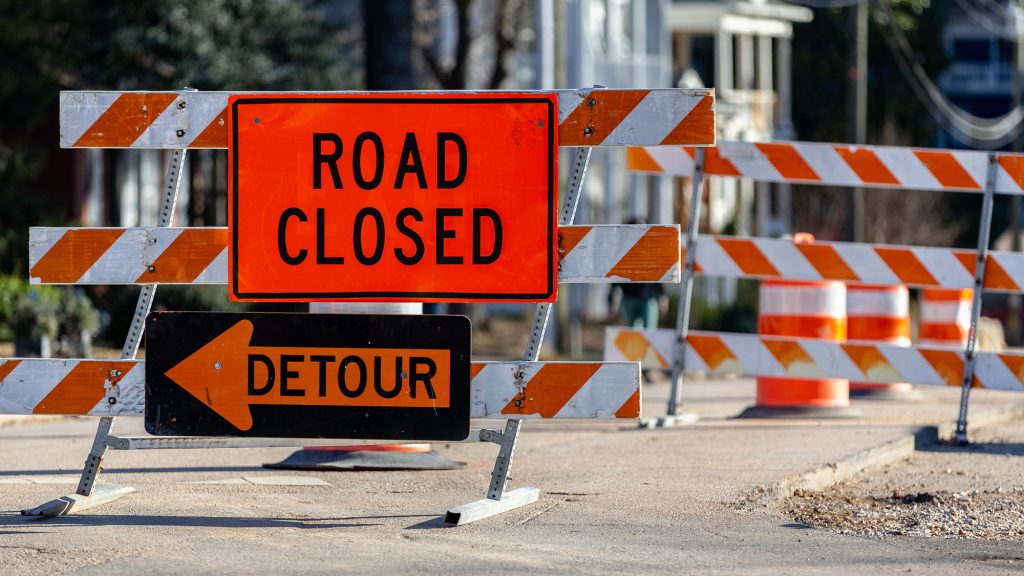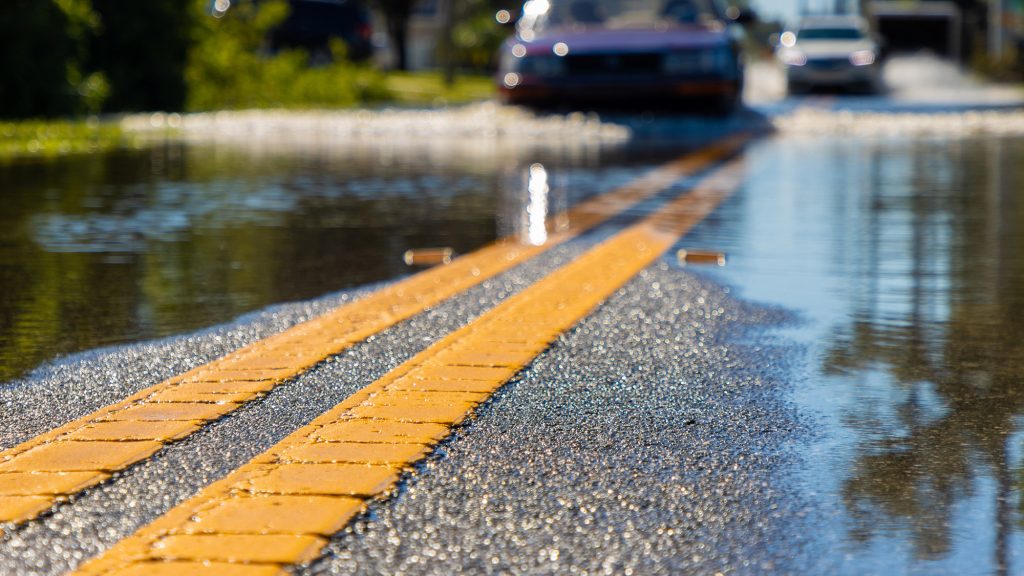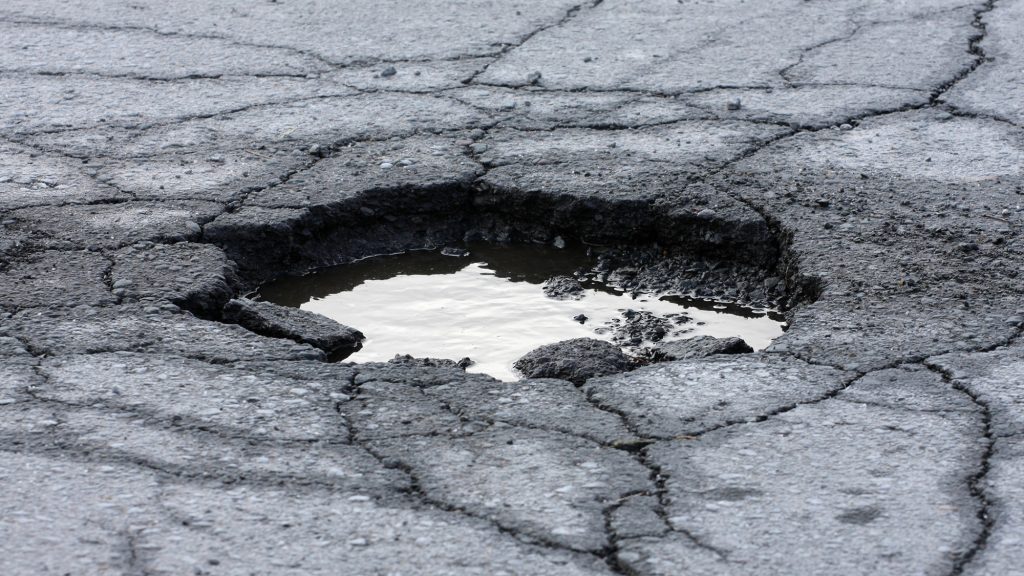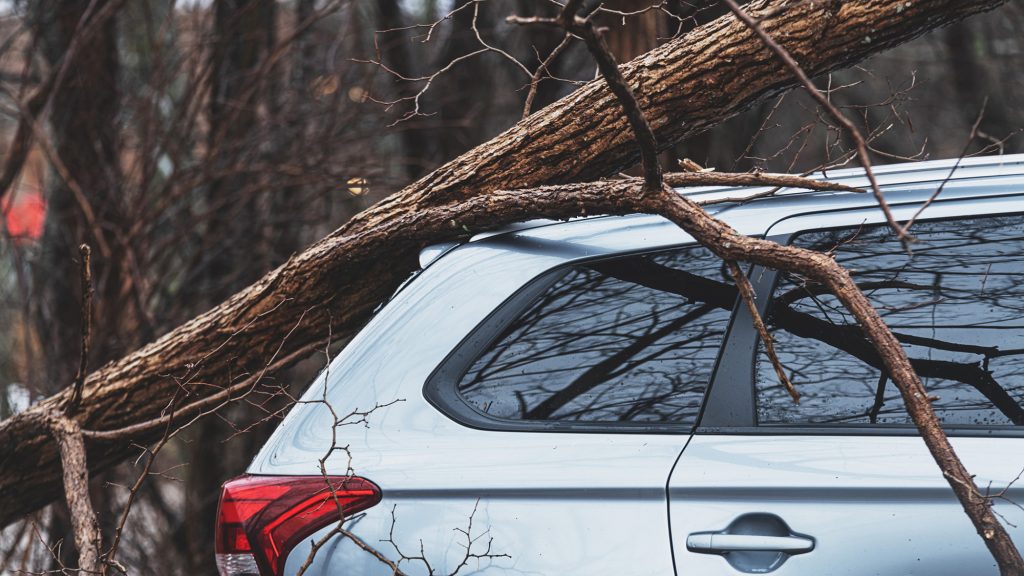Common Road Hazards in Texas
We’re sure you’re all too familiar with Texas’ many stereotypical road hazards: potholed highways, never-ending construction zones, rugged backroads, inclement weather, erratic wildlife, and (of course) unpredictable drivers. But are you familiar with how to handle them?
Here are some of the most common road hazards in Texas and what to do when you encounter them.

Construction Zones
There are more than 300,000 miles of roadway in Texas, but it feels like at any given time, 200,000 of them are covered in orange traffic cones and concrete barriers and are reduced to a single sluggish lane. That’s not too much of an exaggeration either. In April 2025, the Texas Department of Transportation reported it had $60 billion in active construction projects across the state, with thousands of projects underway at a time. TxDOT also reports that nearly 28,000 traffic crashes (and 215 deaths) occurred in work zones in 2024, citing driver speed and inattention as the leading factors.
To be fair, a lot of highway construction sites do seem to appear out of thin air, which gives drivers little time for slowing down, merging, and gathering their bearings. Even when the makeshift lanes aren’t clear, though, you can follow these best practices to make it through the work zone:
- Put an extra distance between you and the vehicle ahead of you.
- Stay off your phone. Even when traffic is at a standstill, looking down at your phone means you’re not watching for impatient drivers, sudden merges, or when your lane starts moving.
- Turn on your headlights. Even during the day, this will help keep you visible, especially to workers.
- Obey all warning signs, speed limits, and worker directions.

Flash Floods
As we tragically know, flooding is endemic in Texas. What you might not know is that about 75% of all flood-related deaths in Texas occur in vehicles. And that percentage is even higher in the Hill Country (aka “flash flood alley”), which is one of the most flash flood-prone areas in all of North America.
If you find yourself out on the road during a flood watch, remember these precautions to mitigate risk:
- Never, ever drive through high water. It only takes 12 inches for a sedan or small SUV to float.
- Avoid low-water bridges, which are the first roads to flood.
- Stay in your vehicle if you’re surrounded by moving water.
- Only evacuate your vehicle if water is rising inside. Get to high ground immediately.
- Prepare your vehicle and your instincts with our guide to driving in the rain.

Potholes
Pothole season is late winter or early spring, but Texas’s erratic temperatures mean potholes can literally appear overnight, any time of year. Which is more than just annoying — jagged potholes can shred your tires, misalign your wheels, and cause costly damage to your suspension systems.
Sometimes, there’s really no avoiding a sneaky pothole. But you can get ahead of them and reduce risk with these tips:
- Don’t brake when you hit a pothole. Sudden braking just amplifies the sudden shock and wears out your suspension.
- Regularly top off your tire pressure to the recommended levels to absorb the blow and avoid punctures.
- After a rain, don’t assume a pothole is a puddle. A water-filled pothole may be deeper than it looks.

Ice
Because ice storms seem rare in Texas, we aren’t the best road navigators when they do occur. They’re most common in North Texas and the Panhandle, but it helps to know these tips for driving in icy conditions:
- Avoid driving if freezing rain is in the forecast. If a situation demands you leave the house, consider investing in tire chains for emergencies.
- When driving in icy weather, lower your speed significantly and avoid quick turns.
- If you start sliding on ice, take your foot off the gas and steer straight.

How Insurance Can Help
Tips for handling road hazards are great for mitigating risk, but we can’t predict what we’ll encounter on the road, of course — or whether we’ll avoid it. That’s where auto insurance comes in:
- Comprehensive Auto Insurance: Covers damage from floods, storms, animals, and falling debris.
- Collision Coverage: Covers pothole and construction-related damage.
Contact your Agent today to ensure your policy has you covered for every misadventure on Texas’ roads and review our guide to roadside safety.
Coverage and discounts are subject to qualifications and policy terms and may vary by situation.



